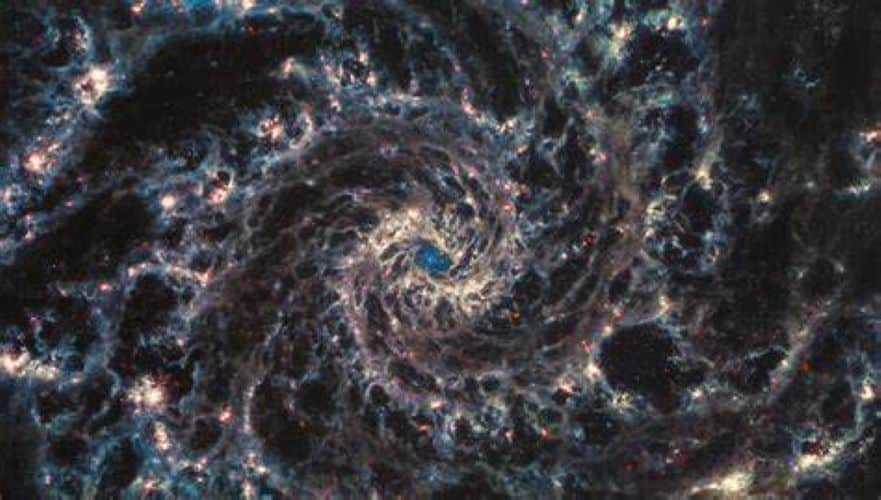Discovery of the Distant Spiral Galaxy Zhúlóng

Astronomers have made a groundbreaking discovery using the James Webb Space Telescope (JWST). They have identified a massive and distant spiral galaxy named Zhúlóng. This galaxy, with a redshift of approximately 5.2, dates back to a time when the universe was less than a billion years old. Zhúlóng features a grand-design spiral structure, an expansive stellar disk, and a quiescent core. This discovery is significant for understanding how galaxies evolve over time. It highlights the early formation of mature galactic structures, offering new insights into the universe’s history.
Zhúlóng: Insights from the JWST PANORAMIC Survey
The discovery of Zhúlóng was part of the JWST’s PANORAMIC survey. This study was published on December 17 on the pre-print platform arXiv. Mengyuan Xiao and a team from the University of Geneva conducted the research. They named the galaxy Zhúlóng after a mythical red solar dragon from Chinese folklore. The galaxy has a stellar mass comparable to that of the Milky Way. It spans an impressive 62,000 light-years. Its spiral arms form a well-defined grand-design structure, which is a hallmark of mature galaxies.
The core of Zhúlóng is quiescent, appearing red and densely packed. This contrasts sharply with the star-forming outer disk. This difference indicates that the galaxy is undergoing a transformation phase. It is moving from active star formation to a more quiescent state. This finding is crucial for understanding how galaxies evolve. It suggests that even in the early universe, galaxies could develop complex structures.
Characteristics of the Galaxy
Zhúlóng exhibits several fascinating characteristics. Its star-formation rate is estimated at 66 solar masses per year. This rate is considered moderate for a galaxy of its size and age. The conversion efficiency of baryons to stars in Zhúlóng is approximately 0.3. This figure surpasses that of many galaxies formed later in the universe’s history. These findings indicate that Zhúlóng experienced efficient star formation during its early stages.
The galaxy’s grand-design spiral structure is particularly noteworthy. It suggests that Zhúlóng had a well-organized formation process. The contrast between the quiescent core and the active outer disk provides valuable information. It shows how galaxies can evolve from periods of intense star formation to more stable states. This understanding is essential for astronomers studying the lifecycle of galaxies.
Implications for Galactic Evolution
The discovery of Zhúlóng has significant implications for our understanding of galactic evolution. It underscores the emergence of mature galactic structures much earlier than previously thought. Zhúlóng is now recognized as the most distant spiral galaxy identified to date. This finding challenges existing theories about when galaxies began to form complex structures.
The insights gained from studying Zhúlóng can help astronomers refine their models of galaxy formation. They can better understand the processes that led to the development of galaxies in the early universe. This discovery opens new avenues for research. It encourages scientists to explore other distant galaxies and their characteristics.
The identification of Zhúlóng marks a significant milestone in astronomy. It enhances our understanding of the universe’s early history and the evolution of galaxies. As researchers continue to study this remarkable galaxy, they will likely uncover even more fascinating details about the cosmos.
Observer Voice is the one stop site for National, International news, Sports, Editor’s Choice, Art/culture contents, Quotes and much more. We also cover historical contents. Historical contents includes World History, Indian History, and what happened today. The website also covers Entertainment across the India and World.

